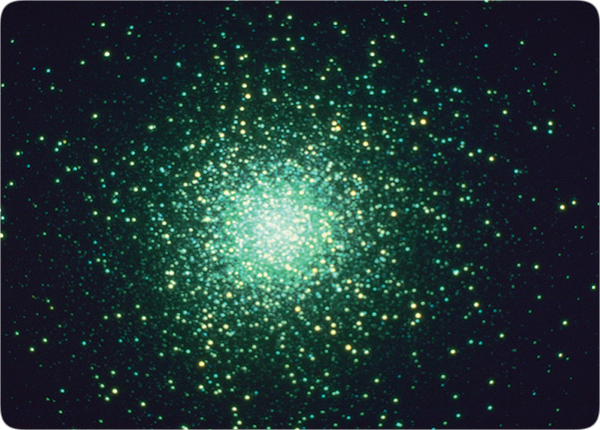Missing Mass 2
A second “fix attempt” assumes that the rocks (or, in the real problem, all particles in the universe) were briefly, almost magically, accelerated away from some point. This process, called inflation, supposedly reached speeds billions of trillions of times faster than the speed of light (c). In an instant later, and for no apparent reason, inflation stopped. All this happened by an unknown, untestable phenomenon—not by a blast. Then this matter became controlled by gravity after it reached just the right speed to give the universe an age (based on one set of assumptions) of about 13.7 billion years (d). Such flights of imagination and speculation are common in the field of cosmology.
c. Supposedly, nothing can exceed the speed of light. Advocates of “the inflationary big bang” get around this problem by claiming that space expanded much faster than the speed of light, but the speed of matter relative to that space did not expand faster than the speed of light. They liken matter to raisins in a ball of dough. As the dough (representing space) rises (or expands), the raisins move outward with the dough but do not move relative to the dough.
“Inflation” has no experimental or observational support and supposedly happened before the laws of physics came into existence. Therefore, “inflation” lies outside the scientific realm. “Inflation” is a relatively recent “patch job,” a nonscientific speculation inserted to get around a scientific problem. Here, the scientific problem is that nothing can exceed the velocity of light (except possibly the expansion rate of space). In science, a “patch job” is usually a warning that a theory is in trouble.
d. The inflationary big bang was proposed by Alan H. Guth in a paper titled “A Possible Solution to the Horizon and Flatness Problem” in Physical Review, D, Vol. 23, 15 January 1981, pp. 348–356.
The “missing mass problem” can be stated more directly. If the big bang occurred, the total mass of the expanding universe should have a very precise relationship with the outward velocities and distances of all galaxies and other matter. This mass must not deviate from this amount by even one part in 10^55 (ten thousand million billion trillion trillion trillion).
If the mass were slightly greater than this critical value (the closed condition):
i. gravity would have quickly collapsed all the matter in the universe into one big ball, perhaps within seconds,
ii. we would not be here to wonder how everything began.
If the mass were slightly less than this critical value (the open condition):
i. particles would have expanded indefinitely,
ii. stars and galaxies would not have formed, and
iii. we would not be here to think about it.
The estimated mass of the visible universe is less than a tenth of this critical value. Stars and galaxies exist. Therefore, the big bang probably did not occur. Faith in the big bang theory requires believing that a vast amount of invisible, unmeasurable mass is hidden somewhere.
This problem can be viewed another way. If the universe began in a big bang billions of years ago, it should:
i. have collapsed on itself (closed), or
ii. have expanded so much that stars and galaxies could never have formed (open), or
iii. have expansion velocities for most visible particles in the universe that lie within a ridiculously tight one part in 10^55 of their escape velocities!
Consequently, the universe probably did not begin in a big bang billions of years ago.
[From “In the Beginning” by Walt Brown]

